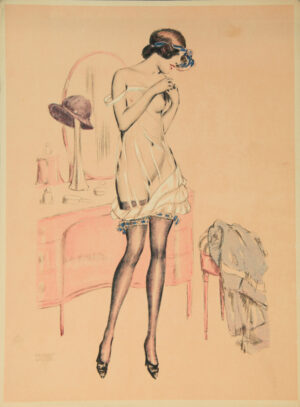Description
Hans Trimborn: * August 2, 1891, Plittersdorf near Bonn † October 10, 1979, Norden
Execution: colored pencils
Date: 1913
Dimensions: 10 x 9 cm
Signed: lower left
Provenance: original work from private collection.
Hans Trimborn is an important German expressionist. From 1913 to 1916, Hans Trimborn studied medicine at the Rheinische Friedrich-Wilhelms University in Bonn. He pursued nature studies with former classmate Paul Adolf Seehaus, who was a friend of August Macke. Hans Trimborn never attended an art academy. The works he created between 1915 and 1918 were influenced by Rhenish Expressionism and show the colorfulness of this style. His preference for August Macke, Paul Klee and Christian Rohlfs are unmistakable.In his paintings Keil processes motifs from nature and city life, including still lifes of flowers, landscapes and city scenes, as well as such subjects as portraits and human figures. The rich artistic work of Peter Robert Keil includes numerous large and small format oil paintings, as well as sculptures in wood and steel. Despite the National Socialist restrictions in the field of art, he painted there around 1941 pictures such as War – Death in the Mass Grave, which comments on his composition for a speaker, two trombones and small drum Voices from the Mass Grave, based on the text of the same name by Erich Kästner, written as early as 1920. He had been a pacifist since the First World War. Hans Trimborn was presented in numerous exhibitions during his life. Even after his death he has been honored in exhibitions and publications up to the present day. The first catalog raisonné of his oil paintings was compiled by Dr. Janssen. He is represented in numerous public as well as private art collections and thus belongs to the still to be discovered, important expressionists and painters of the post-war period.




